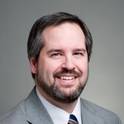We are developing a series of engaging, effective, and usable virtual labs/online activities to teach the science of geochronology. These labs will be available to all students and teachers through digital libraries of teaching resources, but are being designed in partnership with the Idaho Digital Learning Academy for implementation and evaluation in their 8th-9th grade on-line Earth Science courses. Although the activities are designed for a young audience, the content will also be useful for introductory earth science courses at the college level.
An understanding of geologic time is fundamental to the geosciences, and is highlighted by the Earth Science Literacy Initiative (ESLI) whose Literacy Principles include a “Big Idea” and supporting concepts related to the age of the Earth, how scientists reconstruct events in Earth’s history, how scientists obtain numerical dates for Earth events, and how the fossil record indicates the evolution of life on the planet (ESLI, 2009). The importance of understanding geologic time is also reflected in the Idaho Content Standards where, “Identify methods used to estimate geologic time,” is one of the 8th-9th grade Earth Science learning objectives (Idaho Department of Education, 2006). The goal of our project is to develop effective learning activities that teach the science of geochronology, which is defined to include an understanding not only of the vastness of geologic time, but how the geologic timescale is defined, how geoscientists determine relative and numerical ages for geologic events, and why knowing such ages is interesting and important.
The online learning activities are being produced in a series that can be strung together as part of a comprehensive curriculum on geochronology or used separately to focus on specific learning objectives defined for each activity such as understanding the difference between relative and absolute time, using relative dating principles, using fossils for correlation, and using radioactive decay for numerical dating. All activities created will be SCORM-compliant so that they can readily be used by on-line learning management systems, and built-in assessments will communicate directly with learning management system gradebooks. The first four activities will be tested during the Fall 2011 semester.
Available at: http://works.bepress.com/ross_perkins/10/
